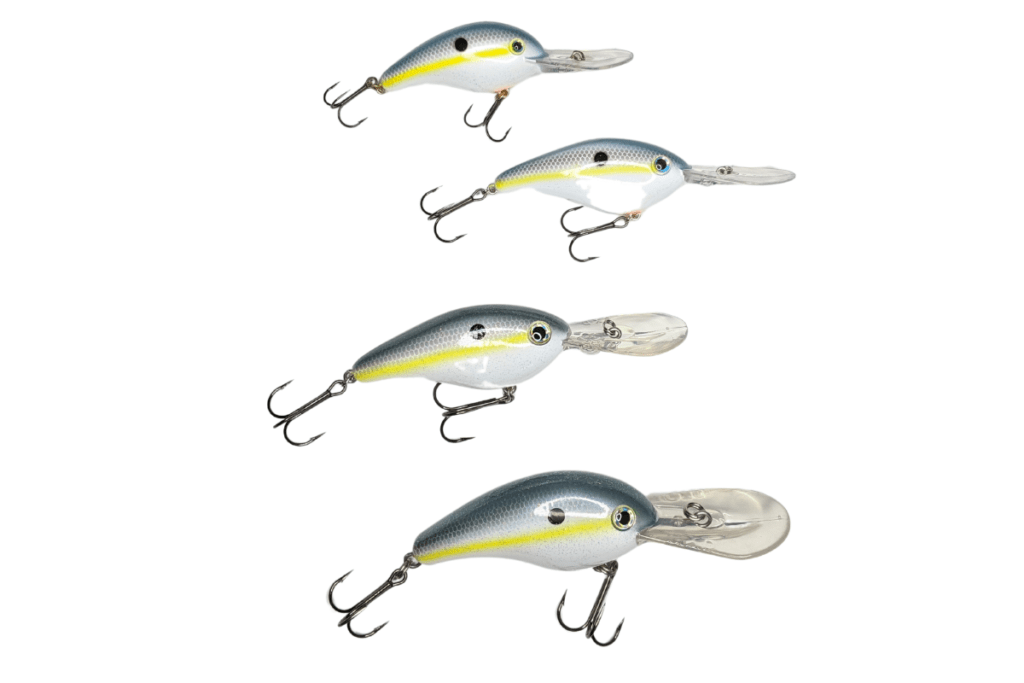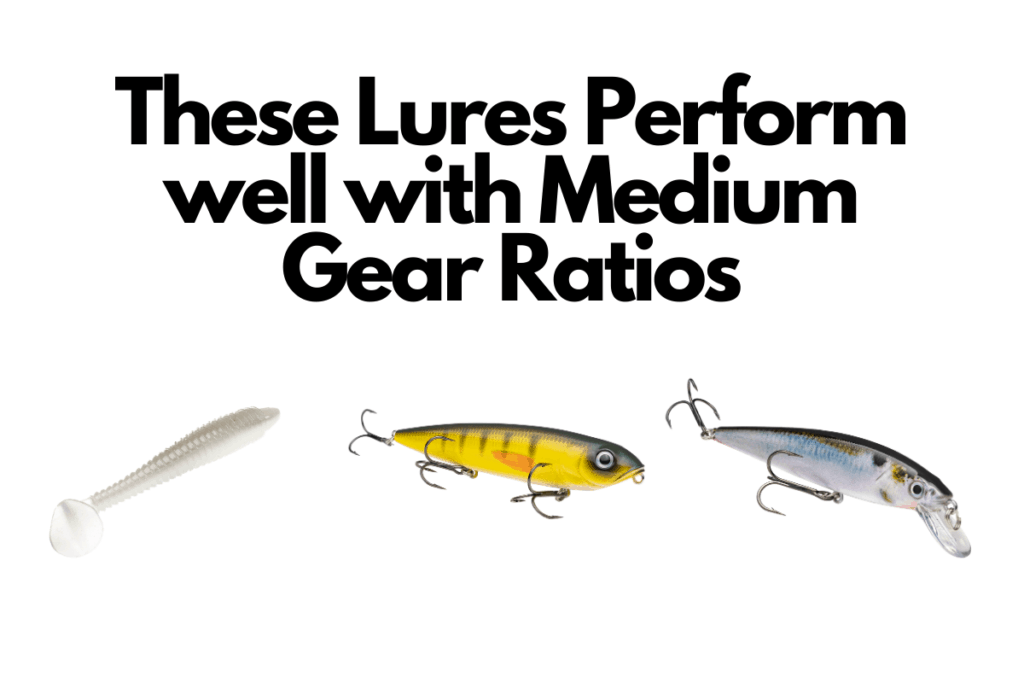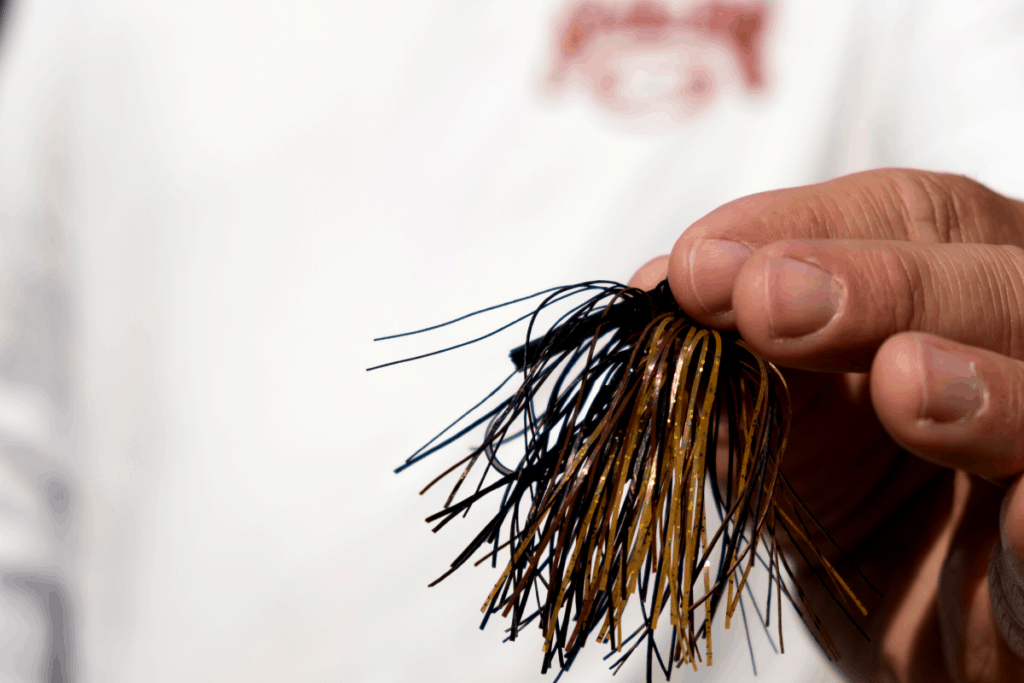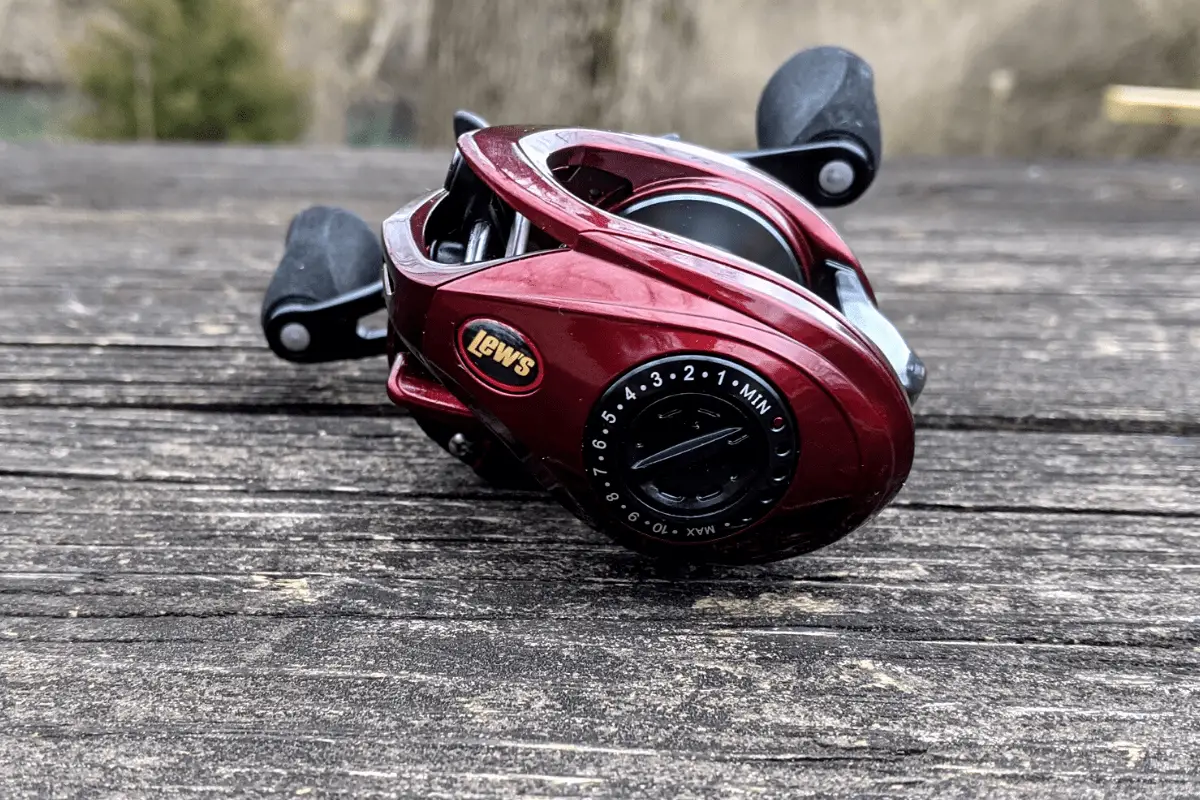It seems there are thousands of choices when anglers are looking for a new reel. An important factor to take into consideration is the gear ratio.
The right gear ratio will allow you to be a more efficient angler on the water and catch more fish.
A gear ratio of 6.2:1 has been considered the best all-around reel speed. That is changing though. Current models include reels in the 8.3:1 range. Finding the best gear ratio for each technique translates to a better day on the water.
We will break down the techniques and gear ratios that are best used with them.
Common Gear Ratios and Line Recovery Per Turn
Baitcast reels can be classified as low speed, medium speed, and high speed.
With the advent of reels that are in the 8.3:1 range and higher, our definition of what constitutes a low-speed reel has changed.
These are common gear ratios and their line recovery per turn.
| Gear Ratio | Inches of Recovery Per Turn |
| 5.2:1 | 22″ |
| 6.2:1 | 25″ |
| 7.5:1 | 31″ |
| 8.3:1 | 35″ |
Each manufacturer has models that may vary, but these examples are a good average and provide a basis for discussion.
(Here is an article on what triggers bass to bite.)
Best Bass Fishing Techniques for Low Gear Ratio Reels
A decade ago, the 5.2:1 models were considered low speed. That has changed in recent years. Most anglers now consider reels in the 6.2:1 ratio low speed.
No matter which preference you have, the premise and use for low speed gear ratios is the same.
As anglers, we tend to fish too fast most of the time and as a result, I almost exclusively save my low gear ratio reels for deep diving crankbaits.
When fishing deep divers, a lower speed reel will allow the lure to work at its designed efficiency and maintain solid bottom contact. I prefer to use my 5.2:1 baitcast reels, but the 6.2:1 versions are becoming the norm for crankbait enthusiasts.
Feel is important when working crankbaits. If the lure is moving through the water column too quickly it is difficult to decipher what it is coming in contact with. Expert crankbait anglers want to be able to tell the difference between pea gravel, chunk rock, sand, and a shell bed.
This information is critical to deciphering patterns and putting more fish in the boat. A low gear ratio reel makes this possible.

Crawling a Crankbait with Low Gear Ratio Reels
This is an effective method to work deep diving crankbaits through thick cover, like a laydown tree.
Choose a model of crankbait that hits a depth slightly deeper than your target.
Using the low gear ratio reel will let anglers bring the crankbait back slowly and crawl it over and through thick cover. This methodical movement coupled with sudden bursts as the crankbait pops over a tree limb can trigger reaction strikes from bass.
Why Not A Higher Gear Ratio for Crankbaits?
When a deep diving crankbait is brought through the water too quickly, two things happen.
First, the lure is not getting its maximum action. Instead, the bait tends to have a tighter wiggle. This eliminates the “searching” wobble that make crankbaits effective tools.
Second, the lure will not get to its maximum depth. The bill on a deep diving crankbait needs to resist the water to drive the nose of the lure down. If the bait is brought back to the angler too quickly, the bill of the lure will not maintain the proper dive angle.
Not only will this minimize bottom contact, but the actual window of when the lure is in the perfect zone will decrease. Basically, it means the time the crankbait is in position to do its best work is almost zero.

Best Bass Fishing Techniques for Medium Gear Ratio Reels
Most techniques that have a horizontal presentation are best served with a medium gear ratio reel.
Swim jigs, topwaters, spinnerbaits, as well as hard and soft jerkbaits are all great lures for this reel speed.
I still consider my 6.2:1 a medium gear ratio reel, but as mentioned earlier, things have changed. Many anglers now consider reels in the 7.5:1 range ideal for these applications.
But, if you notice the inches of recovery per turn in the table above, the difference is significant. While six inches does not seem like a lot, when thought about in terms of horizontal coverage, it becomes noticeable.
If you feel that you fish too fast most of the time with your horizontal lures, I suggest using a 6.2:1.

Best Bass Fishing Techniques for High Gear Ratio Reels
The high-speed, or burner, reels are best suited for vertical presentations.
At first, that may sound strange.
Bass anglers use the high rate of recovery not for the initial presentation, but when the presentation is over.
After that Texas rigged plastic has worked through the brush and been hopped a time or two, getting it back to the boat quickly is preferable so another presentation can be made.
At the end of a long day of fishing, anglers using high-speed gear ratios for their vertical and bottom bouncing presentations will make many, many more casts. This translates into additional opportunities to get that lure in front of a bass.
Get That Bass Out of the Cover Quickly With a High-Speed Gear Ratio
Another benefit to high-speed reels when using Texas rigs and jigs is the ability to get that fish out of cover quickly.
When bass are buried up in the thick stuff it is imperative that anglers do not let them turn their head and pull back into the heavy cover. A high-speed reel, along with a medium-heavy or heavy power rated rod, is an efficient tool to land that fish without it getting wrapped up on a limb or buried in vegetation.
Carolina Rigging with a High-Speed Gear Ratio
I also always use a high-speed gear ratio on my Carolina rigs – not for bringing the lure back, but for catching up to the bass once I have a fish on.
For some reason, bass love to charge towards deeper water when caught on a Carolina rig. The high-speed gear ratio allows me to catch up to them and maintain pressure. By nature of the presentation, anglers have lots of line out with a Carolina rig. It is uncanny how many bass are lost because the angler cannot keep up with them when they charge straight at the boat. I have experienced this often and a high-speed gear ratio solved the problem.
Frog Fishing with High-Speed Reels
Fishing with a hollow-bodied frog is another application that excels with high-speed reels. Once again, not for the actual presentation, but for getting the bass out of the slop and towards the boat once it is hooked.
Final Thoughts
Gear ratio is an important part of equipment selection. Certain techniques are more efficient when paired with the right reel.
The end result is more bites and more fish caught.
A lot of anglers ask me what the best gear ratio is if they could only have one reel.
I would buy one in the 6.2:1 gear ratio.
An angler that loves deep diving crankbaits can use that gear ratio successfully if they are conscious of not reeling too quickly. That same reel can be effective when fishing bottom-bouncing lures like a jig. The angler will just need to make it a point to reel quicker when pulling a bass out of thick cover.
Like anything in the bass fishing world, there are many choices. As your skills and presentations expand, having the right gear ratio for certain techniques will become second nature.
Tight lines. Be safe and make sure to encourage someone today. You never know how you may change their life forever.
Isaiah 6:8

